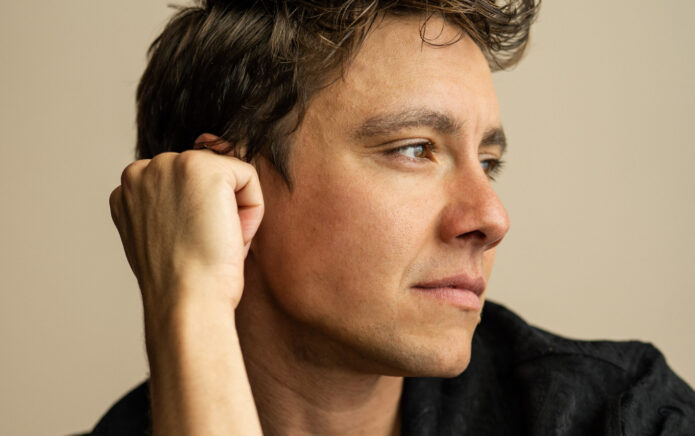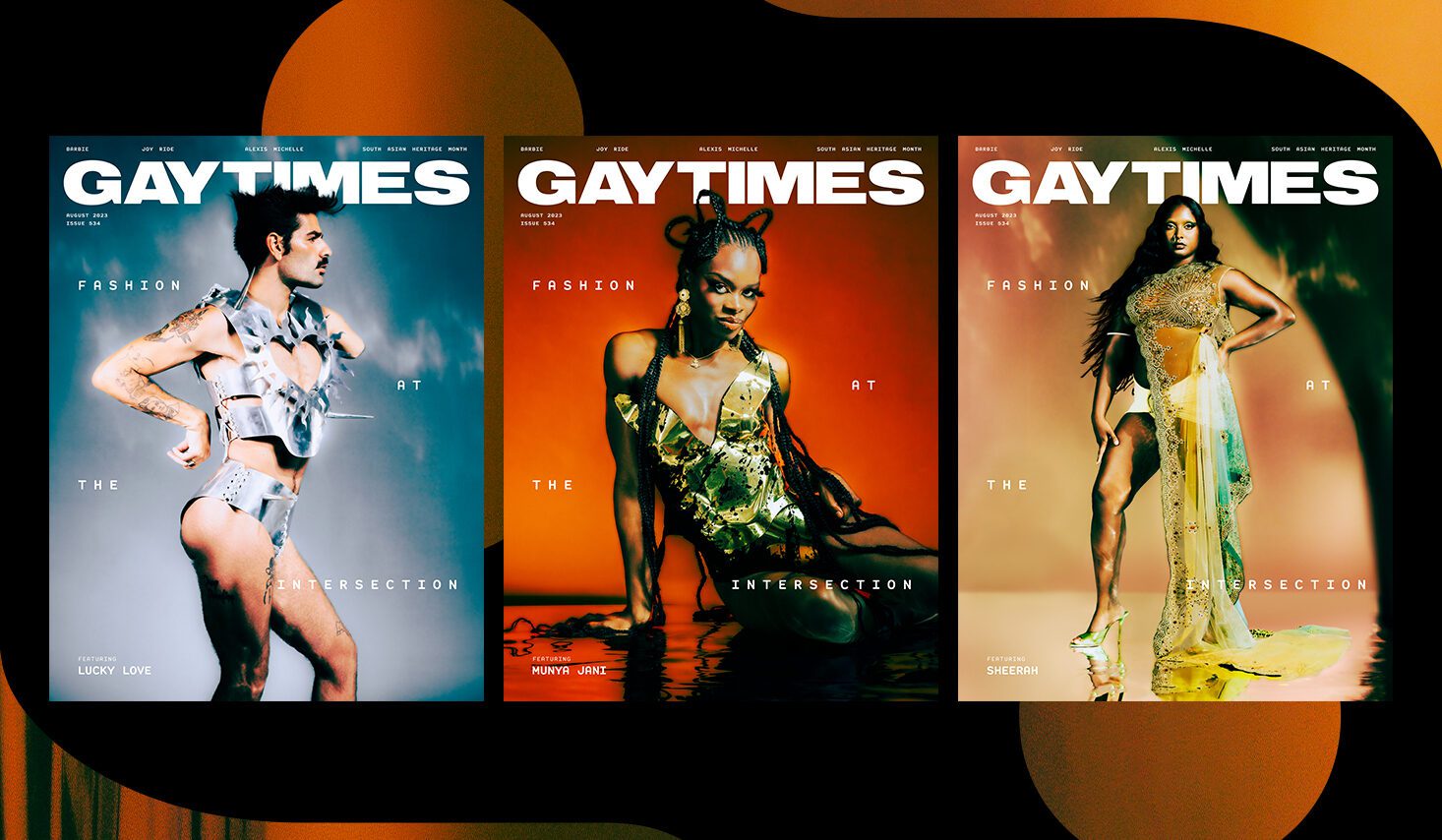
Fashion! It’s a feast for the eyes. It rotates from the camp, the outrageous and the chic. When you gaze into its alluring eyes for a split second you’ll be left inspired, moved, and utterly awestruck by the power of innovation and creative design. It’s only when you dive deeper, past the immediate visual satisfaction, when you unpin, undress and loosen the seams. It’s clear that this seductive and blinding industry is built on and thrives on queer excellence and artistry. Queer creativity is everywhere, in every garment and image. Behind any iconic fashion moment, there is most likely always a queer spirit in the room guiding and facilitating its creation from ideation to conception. Fashion, afterall, provides a vibrant space where queer creatives can transform their lived experiences, unique energies and emotions, dynamic thoughts and feelings into works of art. It’s a place where one’s intersectional thoughts and identities can be explored and expressed with nuance and balance. Fashion, just like the people who exist within it, cannot be defined as one thing, word or look. It is an energy that lives in the eye of the beholder. It’s this thought that inspired us to showcase and profile three multi-dimensional queer models – Sheerah, Munya Jani, and Lucky Love – who are beyond the boxes the industry would like to place them in. They’re models, creatives, musicians, dancers, writers, speakers, change-makers and pioneers for a new wave of fashion.
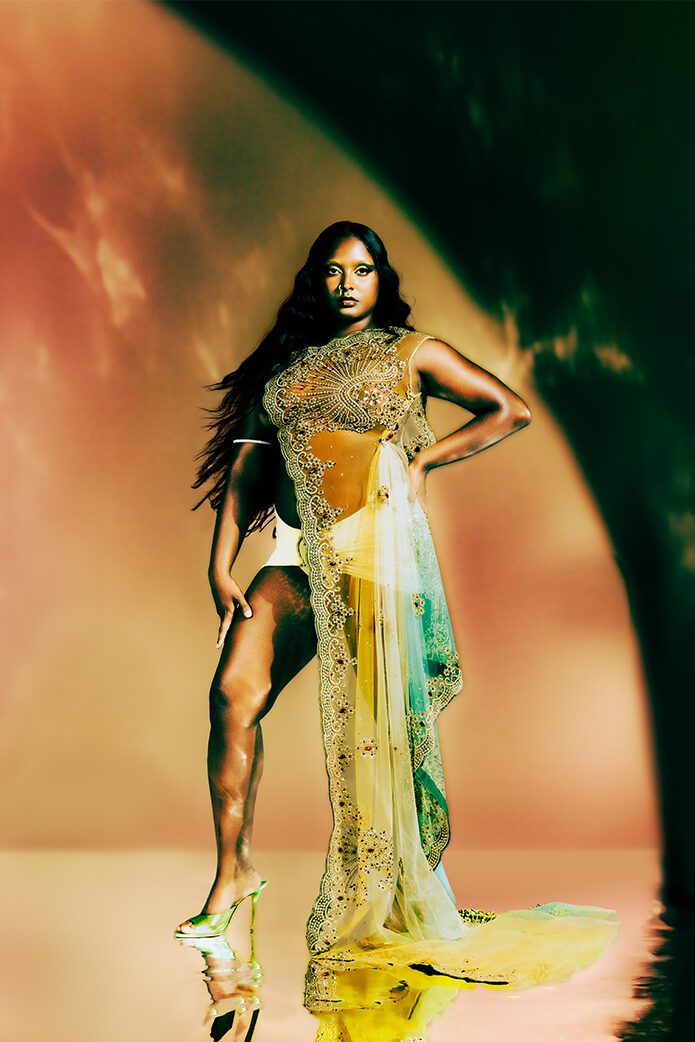
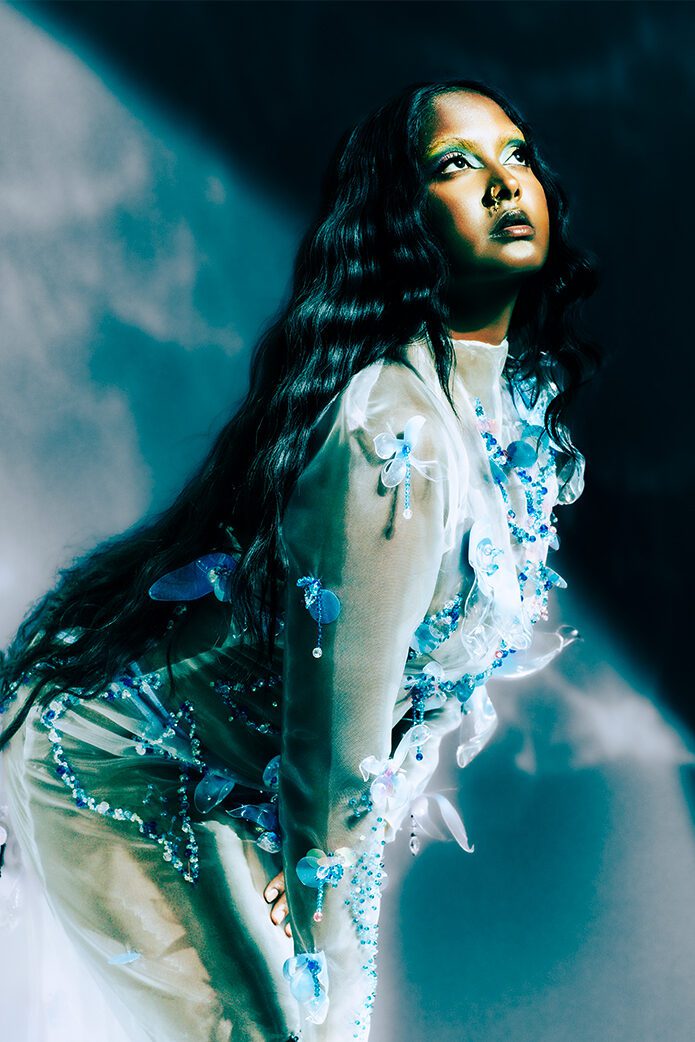
Sheerah
In your own words, how would you introduce yourself to the world? What are the key pillars that make up Sheerah?
If I was introducing myself to people, I wouldn’t even talk about my occupation. There’s words that I feel strongly describe me, my essence and my viewpoint on life. So I would say an anomaly, an icon, a muse, and a God. I would also say punk because I feel like punk is an ideology and a state of mind, rather than just an aesthetic. I’ve always gone into spaces and demanded that I am in those spaces, rather than asked. In spaces where I also feel that straight, cis heteronormativity and whiteness has occupied it, I feel like I’m that opposing force. So these are the words and the ideologies, I think really describe me as a person. When people ask me, ‘What do you do?’ it’s a really hard question for me to answer because I feel, in many ways, being a creative – even that word – is so fluid, just as queerness is. I’m creative with a moral obligation. So it’s using the creativity, mixed in with me wanting to do something better in the world, and how I can use that creativity and the platforms that I have to create change, but also be someone that holds the door open so that other people can get in as well.
Sheerah for president! When you speak about being the opposing force, that takes a lot of confidence, assurance and strength. What was the process of accessing and activating that confidence? Was it always there?
I’ve always, even as a kid, been quite strong-minded. I always had a very confident personality. My mom, especially, encouraged us creatively and we did music and singing. We were always on stage; even in church, when there would always be a guy dressed up for Santa Claus. You know how everyone’s always scared to go up? My parents would go to the front and I had no choice!
My confidence was natural, but I’m still human, so I still had insecurities about the way that I am. When you become aware and conscious, you start to feel like, ‘There’s something wrong with this, there’s something wrong with that…’ So, you build this idea of confidence to the outer world. But actually, I wanted to completely take away that layer and be a confident person. To get to that place is not something that happened straight away.
For me, it took a moment of questioning everything around me and it started when I was a teenager. When we talk about beauty standards, for example, the way that I was feeling internally about myself as well, that started when I started looking into social movements and activist groups. I started to understand Black radical politics, Black activists and creatives. That really influenced me, even to explore my own identity as a Tamil person. The way that you see Black empowerment movements, like the ‘Black is Beautiful’ movement, there’s so much that I took from that as a non-Black person of colour because, a lot of the beauty standards that affect our communities correlate back to anti-Blackness. So many aspects of the way that I looked or aspects of my outer self that were scrutinised was because of my proximity to Blackness.
My dark skin, for example. Learning to love Blackness taught me to love my own self, because I had to dismantle my own internalised anti-Blackness and other attitudes – even internalised queerphobia – in order to even get to the place that I am now. When you start to realise that so many of the things that you’ve been taught are not actually things that you yourself think, you start to realise, ‘Wow, I’ve actually been taught a lie.’ It’s like having to take the building blocks apart. You’re gonna make mistakes along the way, but I think the idea of having confidence straightaway isn’t true. It’s a learning process of constantly being confident or more socially aware.
When reflecting on intersectional identities, whether that’s race, queerness or religion, do you think there’s a superpower or strength that exists there?
I know that I have so much power. When people focus on one aspect of who they are, they’re missing out on all the other things that make up who they are. As an adult on this journey, I was just focusing on this part of me. Every single identity of mine, every single experience of mine, everything I’ve ever done, bad or good, has made me who I am. My power is when I understand that all of those things accumulated makes me so individual from anybody else. No one has experienced the things that I have experienced. No one identifies the way that I identify. There might be similarities, but my power is understanding that I am my own being and that is why I’m so confident in who I am and sure of who I am.
You’re unapologetic and fearless, often speaking your mind and truth on social media. What’s that experience and reaction been like for you?
I think that I see myself as this vessel. My image is going to precede my own lifespan. My picture is going to precede my own existence, and actually has nothing to do with me. Because of the identities that this body comes with and what it represents, it’s my responsibility to make sure that I present myself in the most unapologetic, out there way possible, especially for people that have never seen themselves in fashion or media. It’s saying, ‘You have every right to occupy these spaces too.’ It’s important for me to use my body as a way of empowerment to others.
I feel so powerful when someone comes up to me because of something I did and it made them change how they viewed themselves or the world around them. And that’s where my power comes from, I think. That’s the impact I want to have: teaching people on how they can be a better human being. Essentially, learning how to drop your ego because I think that’s where a lot of it starts.
We know Tamil representation isn’t plentiful in Western media, but who were some of the key people that inspired you creatively and personally?
The main people that made a huge impact in my life are my family. My grandfather was a Tamil civil rights activist and the first Christian Martyr to die in the Tamil struggle, murdered by the state of Sri Lanka. He was such a prominent person in that community and used the power or the privilege that he had to help those who are marginalised. I actively don’t use the word ‘activist’ but it’s in my bloodline to be so outspoken because that’s what I come from.
My parents never stopped me from what I wanted to do. In fact, they championed me. My dad instilled this immigrant work ethic in me. My mum pushed the creative and music side. Without them being open-minded and instilling certain values in me and my siblings, I wouldn’t be doing what I’m doing. In terms of public figures, a personal hero of mine is Anthony Bourdain. He was more than just a chef. It’s the way he saw the world and human connection. He used food as that focal point but then he had so much knowledge in music and culture and all the people.
My existence is an existence of icons that have been brought together. I also have to give a moment to appreciate my best friend Ryan Lanji. He continues to champion, mentor and give opportunities to so many incredible queer and trans people. Also, I have to thank dark-skinned Black women because they have done the work that everyone else still fails to do. Growing up, I felt I wasn’t white enough. I wasn’t the right type of South Asian or North Indian or Punjabi. Then I wasn’t Tamil enough. It was always Black women that opened their arms and allowed me into their spaces. It’s important that the South Asian community also opens space for others.
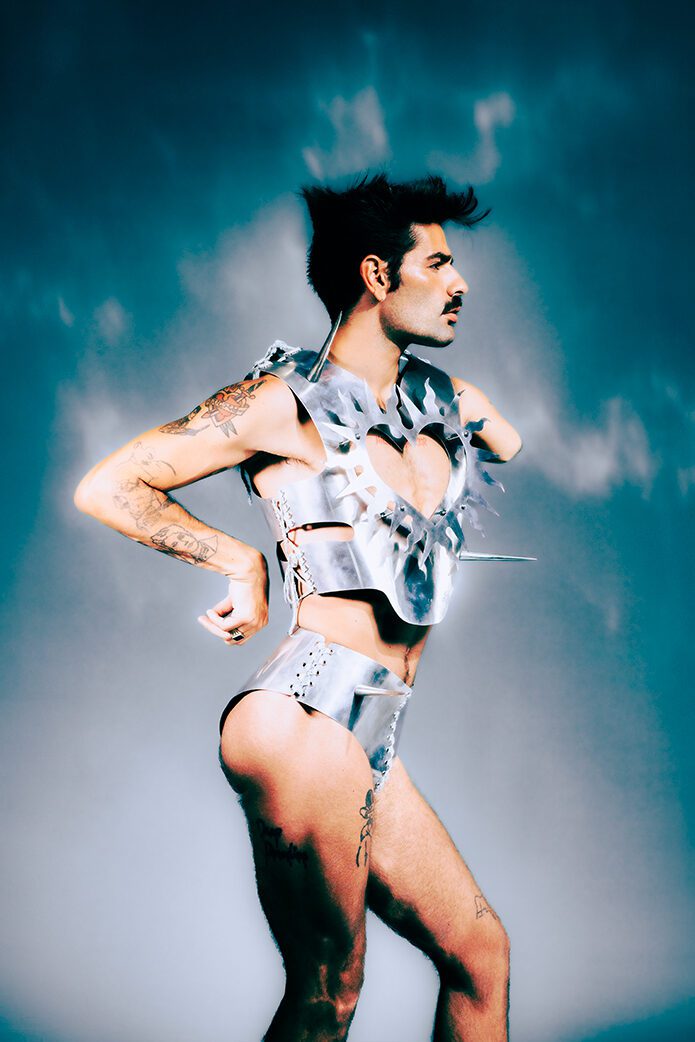
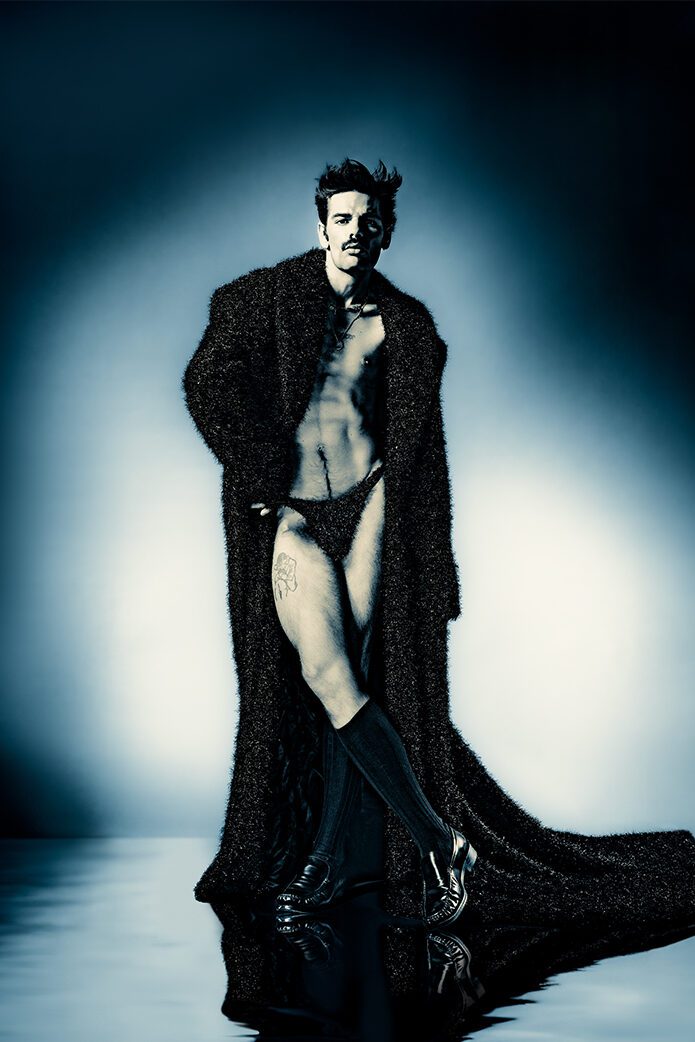
Lucky Love
Lucky, how would you introduce yourself to the world?
I’m Lucky Love, a super sensitive, loving and melancholic character whose only drama is to be in love with life.
What are some of the key sources of inspiration that go into your music and art? How was Lucky Love the artist born?
My key sources of inspiration are The Italian Renaissance, pictural art in general, and the pure beauty of humanity. I’m fascinated by humanity and the holy aspect of it. Because an artist is only the witness of his time, I’m also very inspired by my surroundings and my queer community. Lucky Love is born from the urge to express ideas, to say out loud all the things I’ve been keeping in my chest for so long. My music is a call to my generation.
Talk us through your journey as a model in the fashion industry, How did you get started? Did you face any challenges?
I met the fashion industry through Umberto Leon, who was the Art Director of Kenzo at the time. I did my first show with Kenzo, but everything started after being shot by Craig McDean for Vogue in NYC. After this, I had to be strong and make my space in such a hostile industry. Back in the days when I started, we still had a lack of diversity and representation in the fashion world. It felt quite lonely at the beginning but then nine years later here we are, running the world!
What are some of your key moments so far as a musician and model?
The biggest privilege for me is the incredible artists I had the chance to meet and work with such as Craig McDean and Tim Walker. In the music industry, people like Bonnie Banane, Juliette Armanet and Lava La Rue. Even my producers, Paco del Rosso and Nomak. But I have to admit that when my song ‘MASCULINITY’ went viral on TikTok and became the international anthem of transmasc people, I was so proud. Without knowing it, creating a song that became a safe place for so many queer people is my biggest accomplishment.
Your documentary ‘Lucky’, which was shown at Tribeca Film Festival, ‘was an honest insight to your life and journey. How was it for you to share more of yourself in this way?
The greatest vertigo of my entire existence. But, I felt like I had to share my experience. I had to say out loud what we never say. People have the tendency to think that when you’re famous you’re happy and you must have had a good and simple life. However, my love for my work and for life comes from all the adversity I’ve faced. My urge to express myself is just a way to turn what people would define as a drama into a beautiful and positive art object.
Your energy is infectious and playful. Where did your sense of confidence come from?
I’m still trying to figure it out. Self-love is a constant job. I used to be part of the “fake it ‘til you make it” church but lately I’ve had to face my insecurities and learn to love myself. That’s what I talk about in my last song ‘NOW I DON’T NEED YOUR LOVE’. I’ve always been such a people-pleaser begging for love and consideration. I realised that all the energy and effort I was putting into other people, I could give it to myself first.
Your queerness is unapologetic and at the forefront of some of your songs including ‘MASCULINITY’, why is it important for you to share these experiences in your art?
I want my music to be the refuge I didn’t have as a teen. I want my music to help people of my community to feel seen, represented, important, beautiful and most of all loved.
How can the world become more loving?
By focusing more on what brings us all together instead of focusing on what divides us. Realising the luck we have to be on earth, alive.
What are your dreams and hopes for the future?
My dreams are to simply get to know myself even better, love myself and share this love with the world. I hope my music’s going to help me connect even more with my audience. I want to wake up every morning surrounded by people I trust and love and doing music more and more.
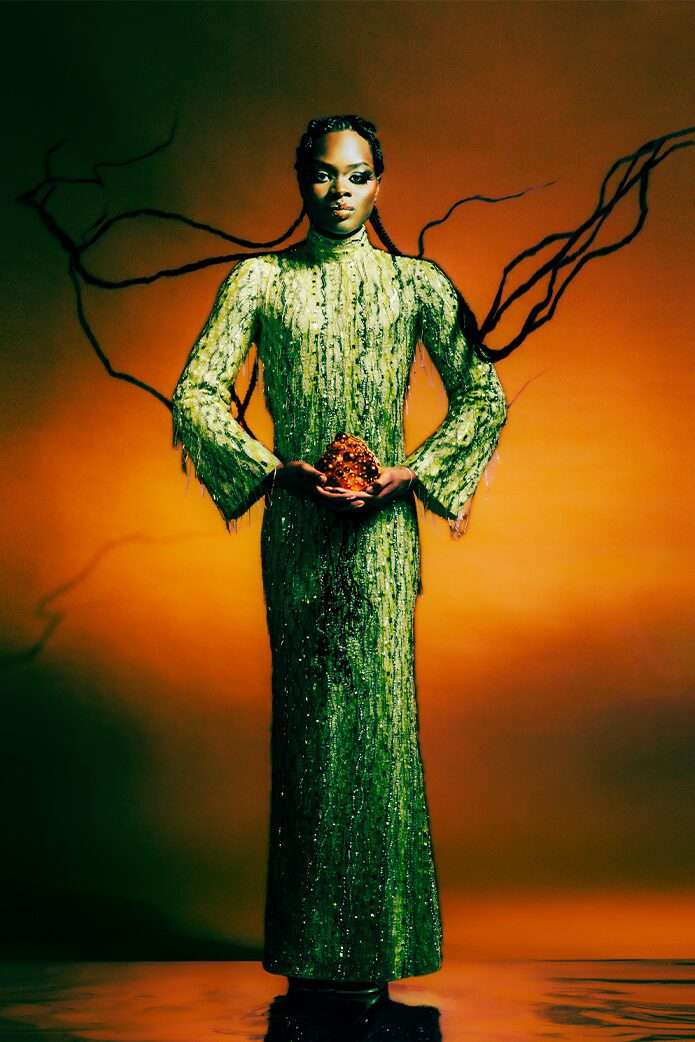
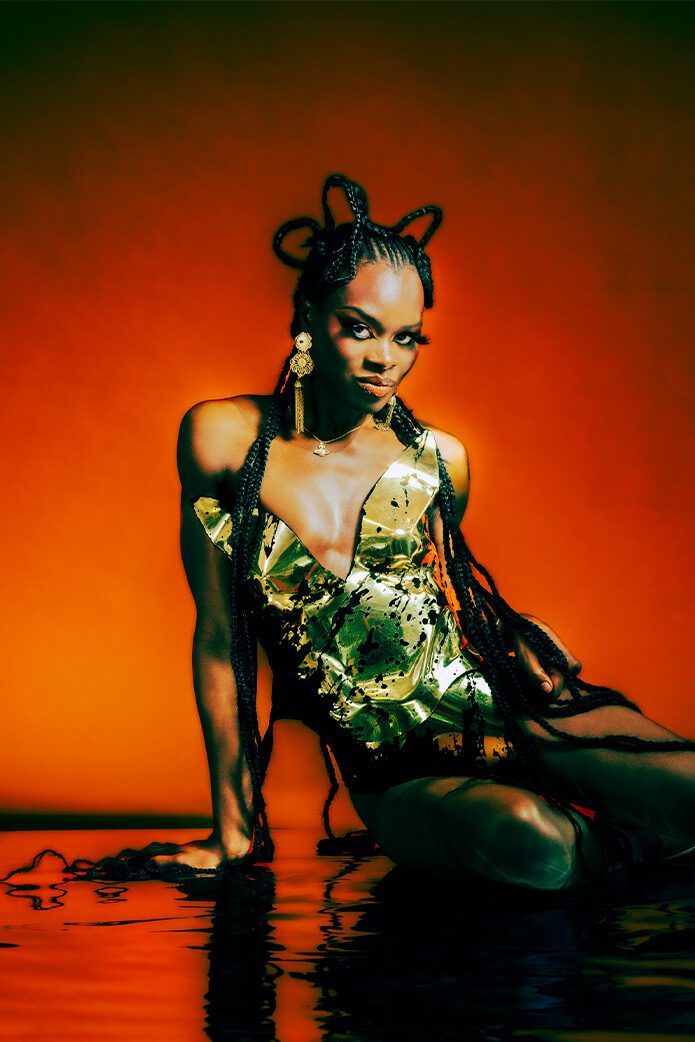
Munya Jani
How would you introduce yourself to the world?
My name is Munya Jani and I am a Black trans woman. I’m 24-years-old and originally from Zimbabwe. I grew up in Hull, where I completed my early education. I am a creative, lover and an active member of the Ballroom scene. In the London Ballroom scene I am known for walking the categories Best Dressed, Fashion Killa, European Runway and Voguer.
How did your modeling career begin? How were you discovered?
My modeling career began in 2019 when I was at university in Birmingham. Due to my personal style, I found myself modelling on my friend’s project. After this I began building my confidence in front of the camera, working on my poses and building my portfolio. This led me to getting signed in London and Birmingham. During this time. I walked my first London Fashion Week show and began booking jobs that would eventually bring me to London.
Where did your sense of style and self-confidence come from?
From a need to express myself. I grew up with little choice, so in my love for fashion I found a freedom of limitless expression. I think of how I’m feeling on that day and gravitate towards items usually in some order of textures, patterns, silhouettes, comfort and accessories. My self-confidence comes from knowing myself and who I am. I’m grateful to know where I come from and the richness of my culture. I learnt to educate myself to unlearn the shame and stigma that can come along with an inherently racist society. My family, especially chosen family, allow my self-confidence to exude by continuous healing, reaffirming, communication and love.
What does the journey of self-love look like for you?
The path I’m currently on. I’m grateful and privileged to be coming up to one year on hormone therapy treatment. I’ve been on a journey of listening to the little girl inside of me. I’m relearning what it means to love whilst allowing my emotions to navigate my entity. In a world where others are so adamant on discussing realities that do not directly concern them, it takes a radical self-love to be able to withstand any of these perceptions – day in, day out. Overall, I am more aligned with my body, spirit and mind. There’s a peace I find day to day that is somewhat ethereal. It’s honestly a dream to be surviving and chasing self love throughout.
What does queer beauty mean to you?
Queer beauty is in the eye of the beholder. There is a uniqueness that transcends binaries and an abundance of creativity. It is a freedom of expression internally and externally. A beauty that’s found through a personal journey where you deconstruct what it means to present how you are and how you express it.
How would you revitalize the fashion industry to make it more inclusive and diverse?
Inclusion and diversity needs to become a priority in the fashion industry. Over the past few years, we have seen some changes that bring previously marginalised groups to success. However, this is often done in ways that feel like tokenism. True inclusion and diversity would see a continuous wider cast with different body types, range across countries, queer identities, height, gender and different body abilities.
Although I understand the industry operates on who the client requests, casting directors and agencies can propose new faces and also continue to push for genuine and continuous representation across seasons. I am an active member of the Haus of Maison Margiela, founded in NYC, which is an organisation that addresses social issues that affect the Black and POC communities.
The Haus of Maison Margiela consists of some of Ballroom’s biggest icons, legends and the next generations of stars. The house prides itself on high standards of excellence across personal, Ballroom and professional lives. The Ballroom scene is international and active here in London, especially for the Black and POC queer youth who need it the most. You can find the next ball in London at Somerset house on the 12 August. Details can be found on Instagram @voguerites.
Who are some of your muses and figures of inspiration?
I have a long list of figures of inspirations and role models, but I have to begin with my parents. I am grateful for their sacrifices and hard work as they provided me and my siblings with better opportunities. My younger siblings bring me so much joy. My heart goes out to Ballroom and the chosen family I have found within this community. It continues to give me the strength to endure through life. The Ballroom icons and pioneers that have paved the way for me, I am ever in your gratitude. Some names include Iman, Naomi Tracey Africa, Michaela Jaé Rodriguez, Munroe Berdgorf, Simone, Erica Kane, Dominique Jackson (Tyra Margeila), Tempress, Amiyah, Tabytha and Neasy.
What are your biggest dreams for the future?
I dream of a more peaceful future, where trans rights aren’t used in parliament as political weapons instead of directing attention to the issues at hand. To meet, work with and form good relationships with the creatives I adore in the fashion industry. Long runways, busy work periods, fashion weeks, Haute Couture, campaigns, editorials and more magazine covers.
I’m grateful to be working in fashion. I cherish all the opportunities I’ve received and I’m looking forward to the rooms I’m going to enter. Working as a model in London can be difficult, especially as a dark-skinned woman. The beauty standards mixed with racist and capitalistic elements force us in a cycle of either not knowing when the next job will come, or chasing invoices for work we’ve already completed.
Proper inclusion is catering to your talent immediately before and after jobs, which also includes our well-deserved payments. Healthcare for trans people in the UK is not adequate due to lack of government funding, and waiting lists can take several years. As people who have already given years of our lives, I urge you to see this through our eyes. Please help the transgender people in your communities begin or continue to access gender-affirming procedures and professionals that help me throughout my journey by donating to the link: https://www.gofundme.com/f/munyas-transition-fund
